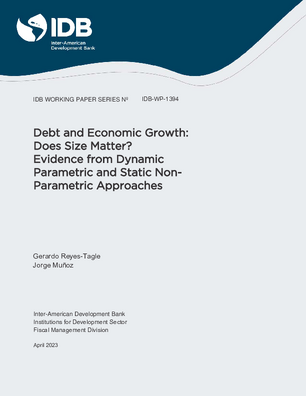Debt and Economic Growth: Does Size Matter? Evidence from Dynamic Parametric and Static Non-parametric Approaches
Date
Apr 2023
This paper provides new evidence on the effect of debt on economic growth through two alternative methodological approaches. On the one hand, by using a panel error correction model with a sample of 130 countries between 1980 and 2020, we found evidence of the existence of a range of debt-to-GDP ratios for which economic growth remains positive after debt surges. This threshold may lie between 32 percent and 136 percent, with optimal economic growth achieved at an 84 percent debt-to-GDP ratio for the whole sample of countries. The error correction form for the economic growth was dynamically consistent and non-linear with respect to the debt-to-GDP ratio. On the other hand, recent evidence has shown that commodity price volatility increases external debt accumulation for commodity-exporting countries. Still, there is no evidence of the effects of debt surges on these countries' economic growth. This paper provides original insights into the relationship between economic growth and the debt-to-GDP ratio for commodity and non-commodity-driven economies by employing a regression discontinuity design (RDD) approach. This method allows us to estimate differences in economic growth around an estimated threshold without assuming any specific function for the underlying relationship between the two variables. Our findings suggest that non-commodity-driven economies benefit from a higher threshold (85 percent) than commodity-exporting economies (50 percent).




